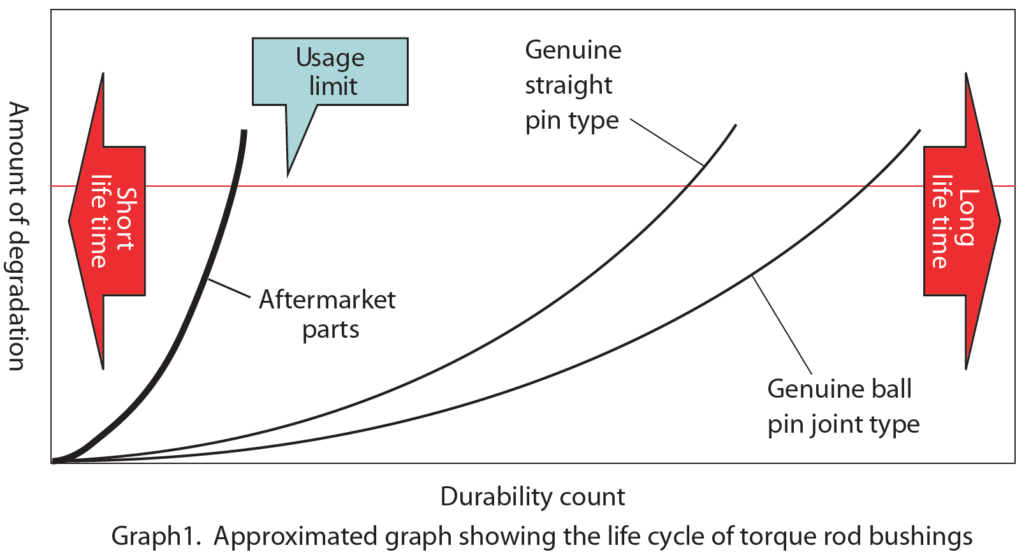Torque rod bushings are attached to both ends of torque rods to lessen the vibration and shock transmitted from the road surface to the chassis. The torque rods and bushings also fix the rear axle in place as well as transmit the driving torque, so they must be able to withstand inputs from a variety of directions.
2. Construction
The torque rod bushing consists of an iron outer sleeve and inner sleeve connected by a rubber piece, in which a pin is placed. (See Fig. 1)

- Outer sleeve – This, along with the inner sleeve, holds the rubber piece in place.
- Rubber – This absorbs input from the road surface to reduce the stresses transmitted to the chassis.
- Inner sleeve – Holds the pin in place and supports it.
- Pin – This connects to the frame and axle.
- Dust cover – Keeps foreign material out to maintain the axle’s function.
- Bearing – This absorbs the rotational input from the pin to reduce the stresses transmitted to the rubber piece.
3. Types
Torque rod bushings come in the two types below.
Type
Images
Characteristics
Straight pin

The rubber piece reduces the stresses transmitted from the road surface to the chassis.
Ball pin joint

This type has a spherical attachment axle to reduce the load on the rubber piece even more so than with straight pin types. This type therefore has a longer life cycle.
4. Differences between genuine and aftermarket parts
Some aftermarket parts, while they may appear to be similar, may have shorter life cycle due to differences in the shapes of their bearings and/or the rubber material used.

5. The importance of maintenance — replacement timing
Operating your vehicle without replacing a degraded torque rod bushing can lead to serious problems such as:
- Snaking and rear swaying during lane changes … Unstable steering.
- Cracks in brackets or the frame due to degraded shock damping performance … Serious accidents. As a general rule, torque rod bushings should be replaced if you notice thumping sounds during deceleration or when driving around curves.
When making replacements, make sure to replace all torque rod bushings on the vehicle, not just the one that has degraded.
